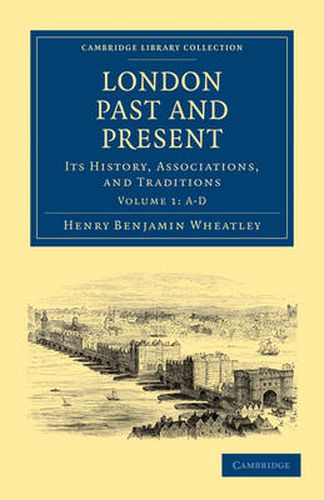Readings Newsletter
Become a Readings Member to make your shopping experience even easier.
Sign in or sign up for free!
You’re not far away from qualifying for FREE standard shipping within Australia
You’ve qualified for FREE standard shipping within Australia
The cart is loading…






The bibliographer and editor Henry Benjamin Wheatley (1838-1917) produced a prodigious number of books and articles on a wide range of topics, literary, historical, bibliographical and artistic. He worked for many years for the Royal Society and the Royal Society of Arts, was a founder member of the Library Association, and produced an edition of Pepys’ diary which was not superseded until the 1970s. London Past and Present was published in 1891, expanding and updating Peter Cunningham’s Handbook of London of 1849. It is a three-volume topographical and historical dictionary of London places and landmarks, and the people who lived there. Based on historical, literary and architectural sources, it reveals many fascinating details as it traces the development of the metropolis from medieval times to the time of writing. Nineteenth-century London was experiencing rapid change, and this work preserves the memory of many buildings now lost.
$9.00 standard shipping within Australia
FREE standard shipping within Australia for orders over $100.00
Express & International shipping calculated at checkout
The bibliographer and editor Henry Benjamin Wheatley (1838-1917) produced a prodigious number of books and articles on a wide range of topics, literary, historical, bibliographical and artistic. He worked for many years for the Royal Society and the Royal Society of Arts, was a founder member of the Library Association, and produced an edition of Pepys’ diary which was not superseded until the 1970s. London Past and Present was published in 1891, expanding and updating Peter Cunningham’s Handbook of London of 1849. It is a three-volume topographical and historical dictionary of London places and landmarks, and the people who lived there. Based on historical, literary and architectural sources, it reveals many fascinating details as it traces the development of the metropolis from medieval times to the time of writing. Nineteenth-century London was experiencing rapid change, and this work preserves the memory of many buildings now lost.